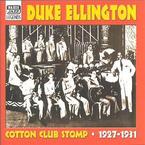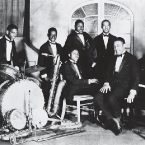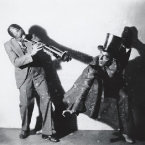Miley, Bubber (1903-1932)

Born in Aiken, SC; trumpeter; Miley came to New York at age six and began studying trombone and trumpet; duing his service in the Navy, he toured with Mamie Smith (1920), played with Elmer Snowden’s Washingtonians (1923), and formed his own band; when his band broke up, many of the musicians, including Miley, joined the Duke Ellington Orchestra (1926-28) where he drew much attention; he later joined Noble Sissle to work in Europe but returned to the States and worked with Zutty Singleton at Lafayette Theatre; Miley was largely responsible for creating the signature “jungle” sound for the Duke Ellington Orchestra that made the group famous by specializing in the use of the rubber-plunger mute and producing dramatic effects, imitating a human voice; his solos are unsurpassed that they have often been referred to as “supernatural”; he co-wrote several compositions with Duke including “East St. Louis Toodle-oo,” “Black and Tan Fantasy,” and “Doin’ the voom voom”; alcoholism made him unreliable and Duke fired him; Miley contributed more than any other musician of his era to the Ellington band; following his stint with Duke, he played with bandleader, Leo Reisman – his solo on “What Is This Thing Called Love” is quite memorable, and formed his own band recording six titles; with Bubber Miley and His Mileage Makers, he recorded Don’t Leave Me Here in New York, vol. 3; at the peak of his career and at only 29 years of age, Miley died of tuberculosis in New York in 1932.
Image Gallery
Selected Albums


